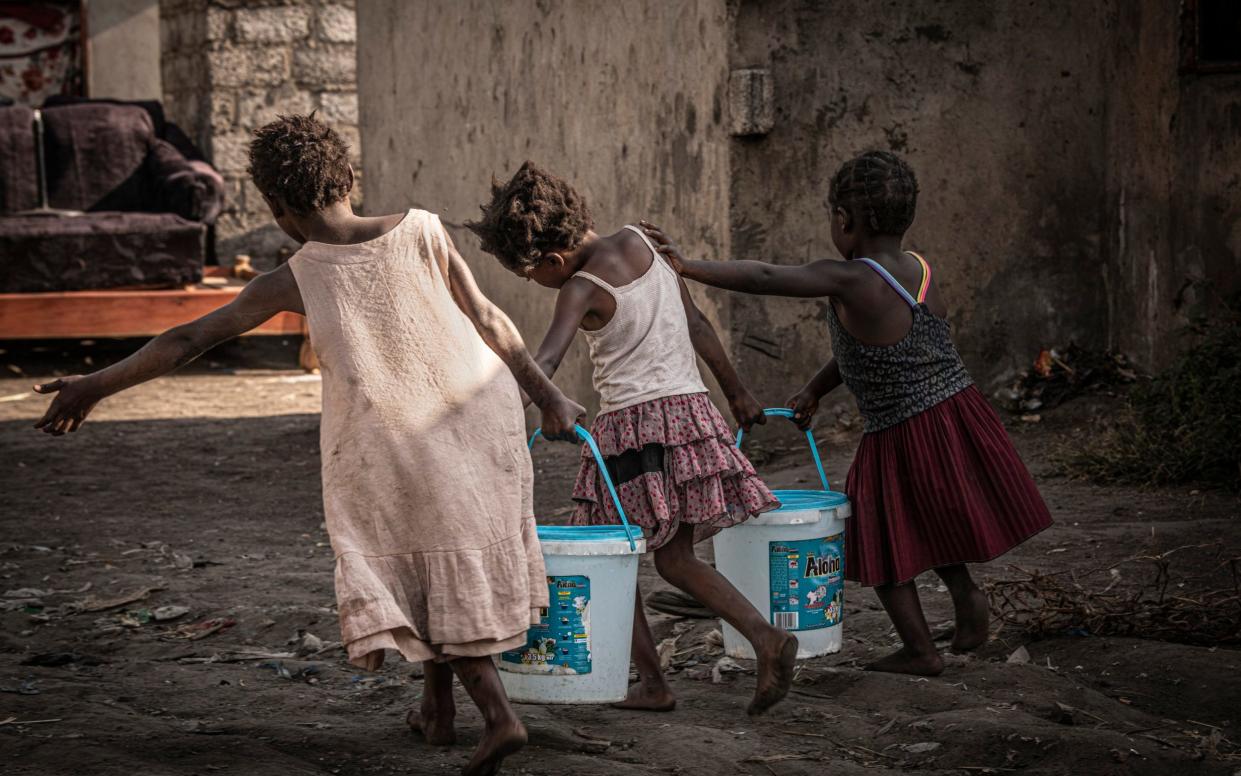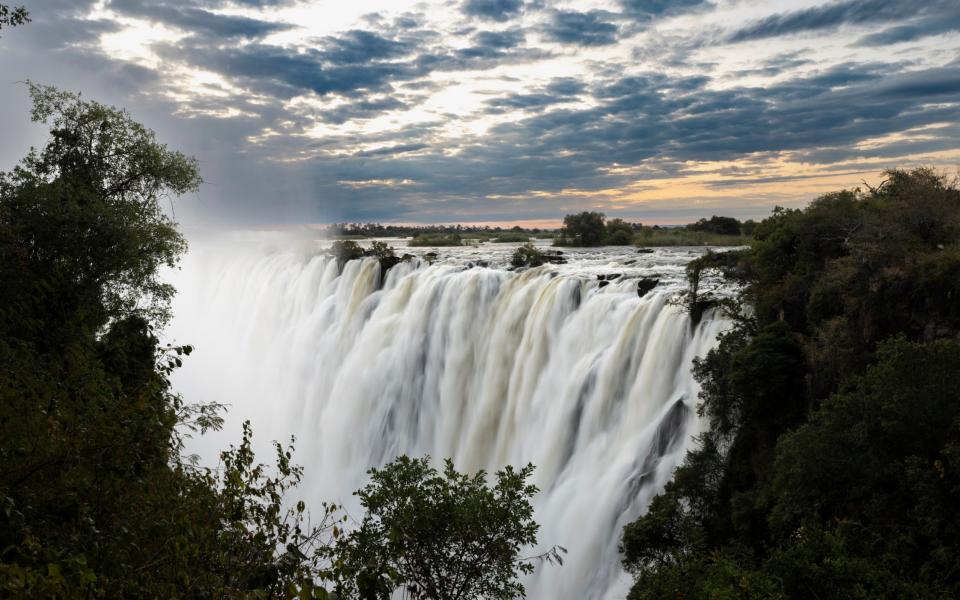‘We can sell your body parts’: the poverty lurking behind a tourist paradise

In Kanyama, an unplanned settlement in Zambia’s capital, two children squeal as they challenge one another to thread a plastic bag through the tail of a dead rat. A toddler watches with a glassy expression, chewing on a jagged, empty tin.
It is mid-morning, and the children – along with dozens of their peers – should be at school. Education is free in the southern African country, but more than one million do not make it into a classroom.
One nine-year-old girl looks down at her bare feet. “My family can’t pay for the shoes,” she told the Telegraph. “You need shoes to go to school.”
A thirty-minute drive away, Lusaka is bustling with businessmen and international tourists arriving for safari tours and sights like Victoria Falls.
Zambia has one of the highest inequality rates in the world. An estimated 58 per cent of 18 million Zambians live below the poverty line, compared to 41 per cent across Sub-Saharan Africa.
Thirty-five per cent of children are stunted as a result of inadequate nutrition, and 29 per cent of 20-24 year old women were married as children – one of the highest child marriage rates in Africa, according to Unicef.
“There’s essentially an emerging middle class that is able to access good, formal jobs – probably 10 per cent of the population – and the rest of the country survives on agriculture,” said Twivwe Siwale, a policy economist for the International Growth Centre. “The difference in living standards are quite stark, it’s quite grim.”

In a report published last year, the World Bank said between 2015 and 2019 any growth benefited only wealthier urban households, with the poorest rural households being “left behind”.
According to the organisation, many factors have conspired to contribute to the stubbornly high poverty rate, including consecutive years of severe drought and an escalating debt crisis.
But inequality is also driven by the booming mining industry. Ms Siwale said profit from copper mining does not trickle down to the poorest in society – especially those living in rural areas – and in instances where the industry has prospered, inequality has risen.
“The mining sector contributes 30 per cent of Zambia’s revenue,” Ms Siwale said. “Those funds go into the general budget, but the Zambian government could do more to target policies towards the poorest and lift people out of poverty.”
Babies ‘too dehydrated to survive’
In Kanyama, poverty and unemployment rates are especially high. Almost 400,000 people are crammed into small one-storey houses, and 37 families, on average, use one toilet.
“We had two six-year-old siblings with cholera here in April, they were very sick,” said Mercy, a health promotion officer. “We have a lot of non-bloody diarrhoea, from water contamination and poor hygiene. Babies die. They come at a late stage, they are too dehydrated to survive.”
It is estimated that hundreds of children in the district do not attend school, and subsequently, unemployment is a major issue.
“Life is a bit tricky. Most people depend on the business of selling at the market. But a lot of people don’t have anything to do. There is no formal work,” said John Dhiri, a 65-year-old local. “Young people then start to buy and sell drugs, they overdose.”
“Covid brought a lot more inconvenience, most people were laid off as they were not making enough money,” he added. “They started doing bad things to gain a living.”

Groups of young men crowd around the settlement high and drunk. One said: “We can sell your body parts.”
Meanwhile, many of the poorer children attending school do not receive an adequate education. Currently, a Zambian child who starts school at the age of four completes on average 8.8 years of education but acquires only five years of learning, according to Jo Bourne, chief technical officer for the Global Partnership for Education.
“A Zambian child born in 2020 will only be 40 per cent as productive as they could have been had they received a complete education and been in full health,” she said.
Just last month the World Bank reclassified Zambia as a low income country, down from lower-middle income. It was the only country to move to the bottom tier of rankings, though two others – Lebanon and Palau dropped from upper-middle to lower-middle, and high to upper-middle respectively. Overall, countries tend to move up the rankings.
The declassification is the fallout from the previous government’s macroeconomic mismanagement, Ms Siwale explained.
“Over the preceding eight to ten years, the macroeconomic situation deteriorated,” she said. “The previous government borrowed heavily when the country was classified as lower-middle income in 2010-11. That gave it access to financial markets. They borrowed but didn’t have a proper plan of how to give outback. Inflation went up, the exchange rate deteriorated, goods and services became more expensive.”

That government was ousted last year with the election of Hakainde Hichilema, who refers to himself as the “cattle boy” after raising livestock as a child. He is now one of Zambia’s richest men.
Many experts, including Ms Siwale, believe he is making progress to change the country’s predicament.
On entering government, he said he had discovered “horrifying” amounts of money being stolen and would show “zero tolerance” towards corruption. Hotels and helicopters have since been seized during his crackdown.
The Zambian tourism agency said it is now “aggressively marketing” the country. Pre-pandemic, more than one million holidaymakers visited the country annually, accounting for 3.5 per cent of GNP. And last week the government cancelled $1.6 billion in Chinese loans in a bid to take control of its debt.

“Zambia is on a positive trajectory with the election of the new government,” Ms Siwale said.
Yet, even if such policies were introduced today, it will take decades to lift the poorest out of poverty, she warned.
“The issue remains to put in place policies that will be pro-poor,” Ms Siwale said. “When I look at the way poverty rates have declined over time, it has been in terms of decades. Yes, it will take a long time.”
Protect yourself and your family by learning more about Global Health Security

 Yahoo Movies
Yahoo Movies 
